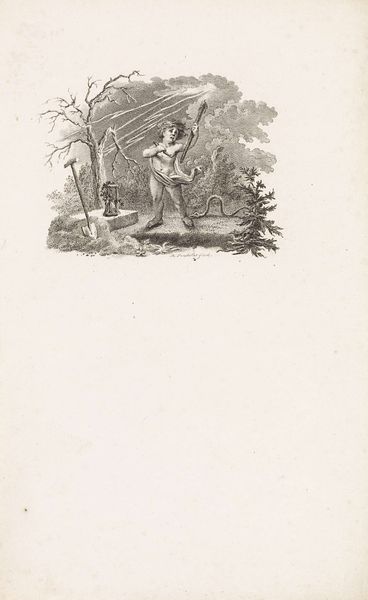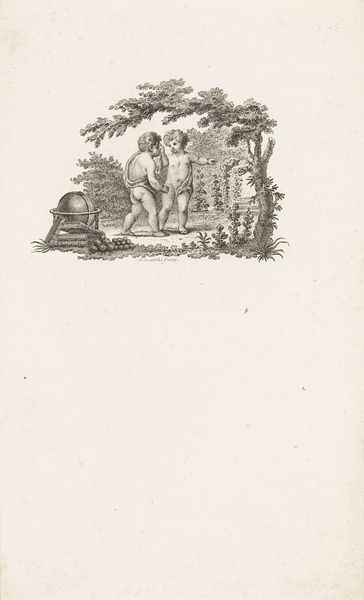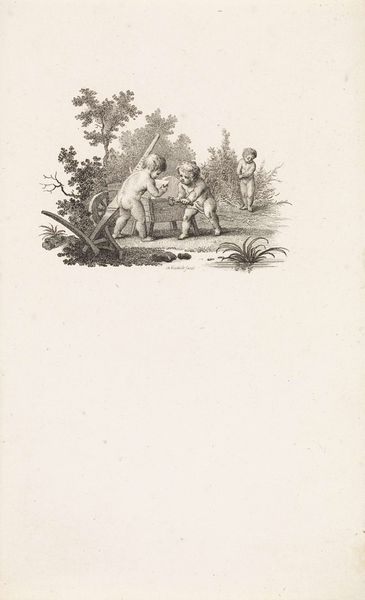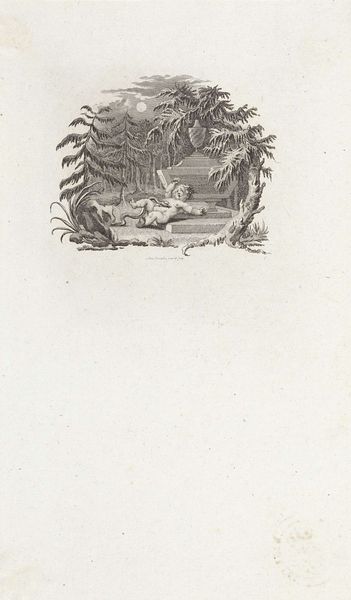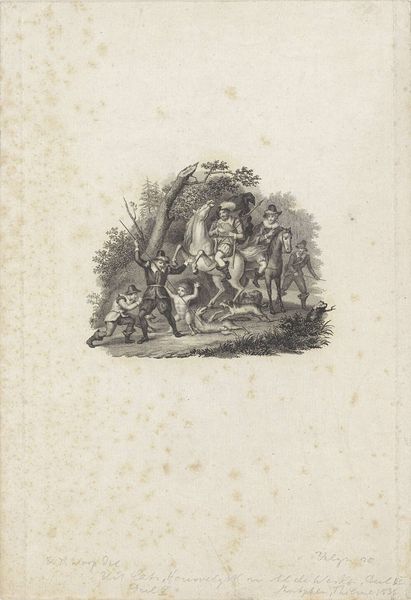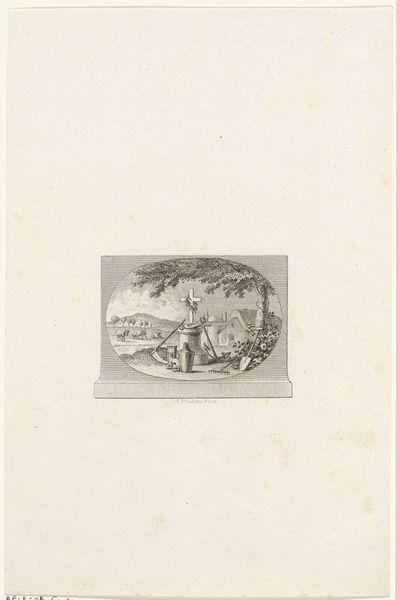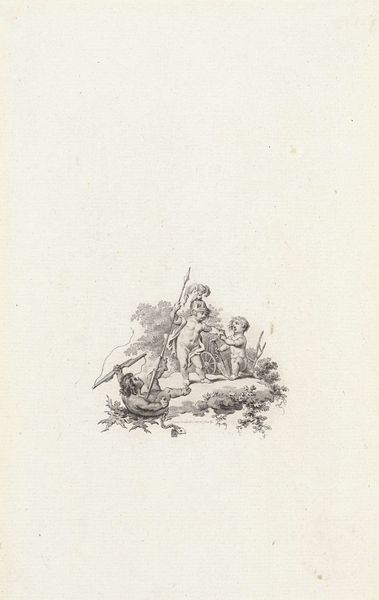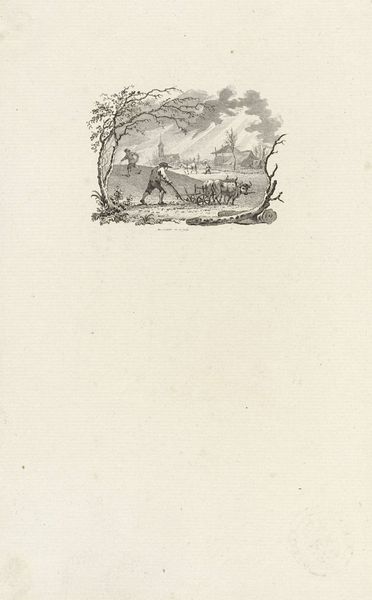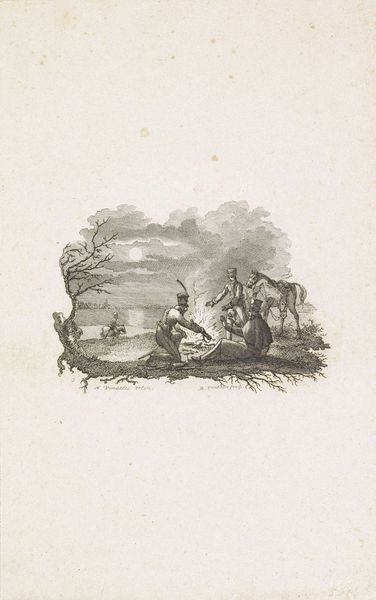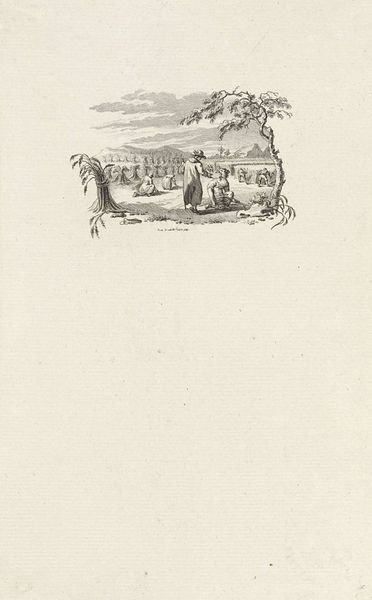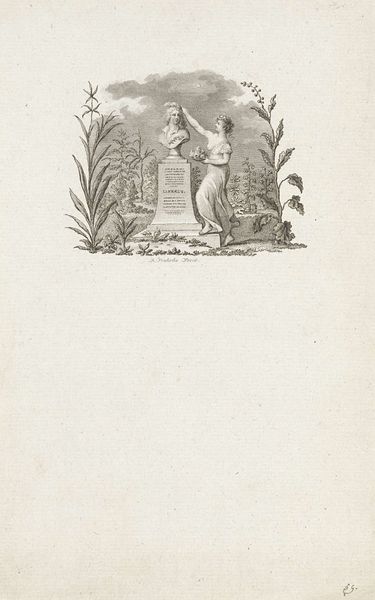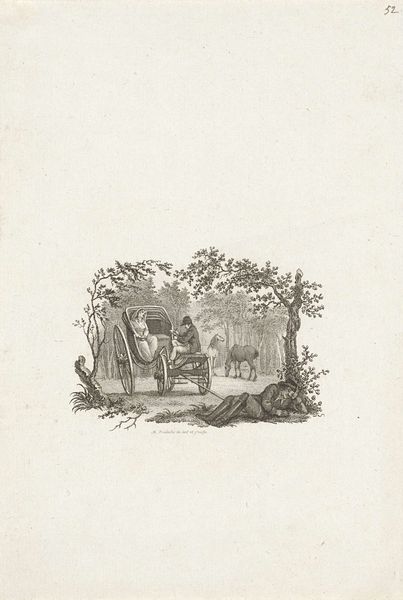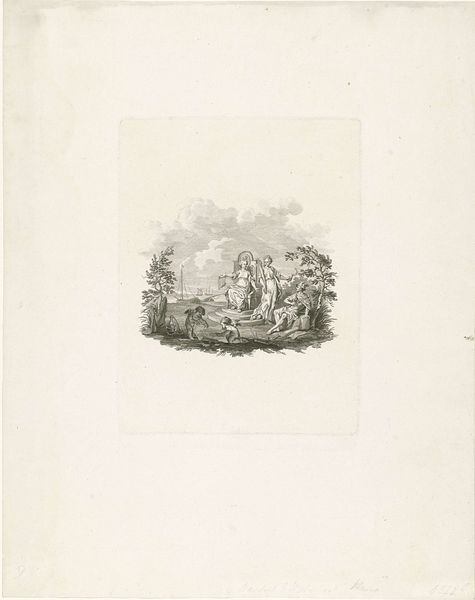
Vignet met drie putti bij een graf gevat in een omlijsting met symbolen van Vergankelijkheid 1751 - 1816
0:00
0:00
reiniervinkeles
Rijksmuseum
Dimensions: height 227 mm, width 133 mm
Copyright: Rijks Museum: Open Domain
Curator: Looking at this miniature print by Reinier Vinkeles, dating back to the late 18th century, titled "Vignet met drie putti bij een graf gevat in een omlijsting met symbolen van Vergankelijkheid", I'm immediately struck by the intricate detail captured within such a small space. Editor: My first impression is how contradictory it feels! The delicate lines and chubby cherubs suggest lightness, yet they’re clustered around a tomb and grinning skulls. There's a tension between joy and sorrow. Curator: Absolutely! The artist employs a Baroque sensibility here, contrasting cherubic innocence with the stark reality of death, framed by vanitas symbols—visual reminders of mortality, all rendered using engraving techniques. I'm captivated by how baroque ideas found a way to be articulated through miniature prints in that period. Editor: The symbolism is layered. You've got the putti, classical figures representing divine love, alongside skeletons symbolizing earthly demise. And look, one cherub’s almost poking fun at a skull. It’s like they are mocking the gravity of death itself. Is it celebratory or cynical? Curator: Perhaps both. Vanitas wasn't just about doom and gloom. It also encouraged embracing the present. The print whispers a narrative of life's ephemeral nature. The allegorical quality of it adds even another layer of significance, reminding us of human transience in a playful yet profound manner. Editor: The "Memento Mori" theme is undeniable, urging the viewer to consider their own mortality, yet wrapped in a very palatable, almost charming aesthetic. It does make me question though... how revolutionary would such symbolic prompts have been perceived at the time? What about such prompts in our age of relentless image saturation? Curator: It's a fascinating question, the potency of symbolism varies according to context. For the original audience, bombarded with death imagery, it perhaps served as a potent daily contemplation, unlike now where the image almost gets romanticized for the aesthetic more than anything. In any case, I'm taken by the balance Vinkeles strikes in the overall composition. Editor: And ultimately, its capacity to still generate feelings about mortality and purpose for audiences viewing it centuries later, feels like an artistic triumph for Vinkeles.
Comments
No comments
Be the first to comment and join the conversation on the ultimate creative platform.
